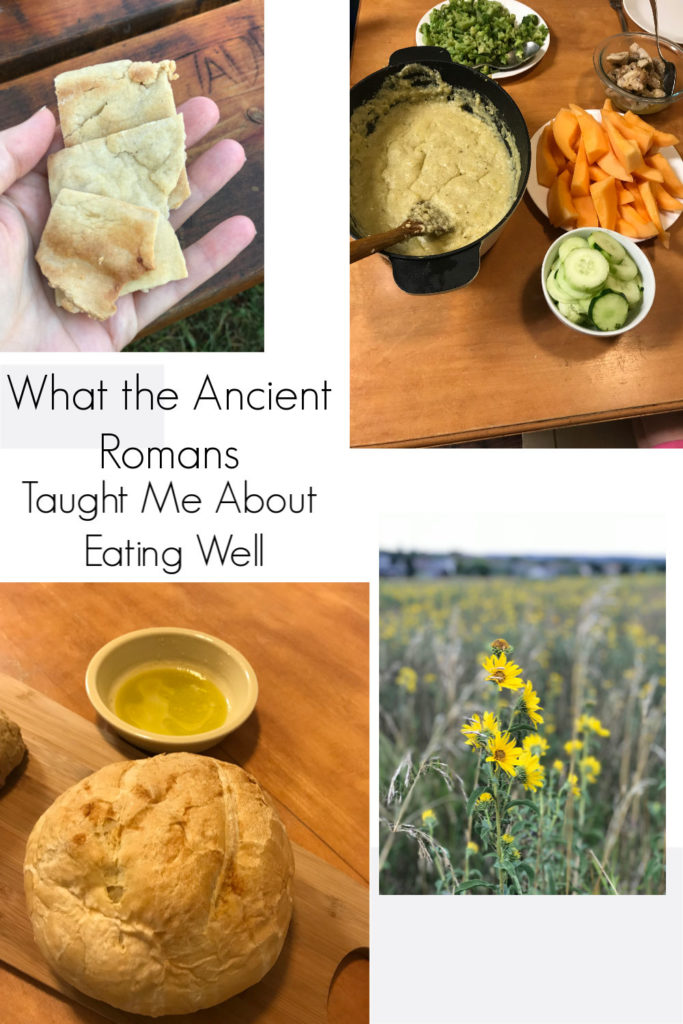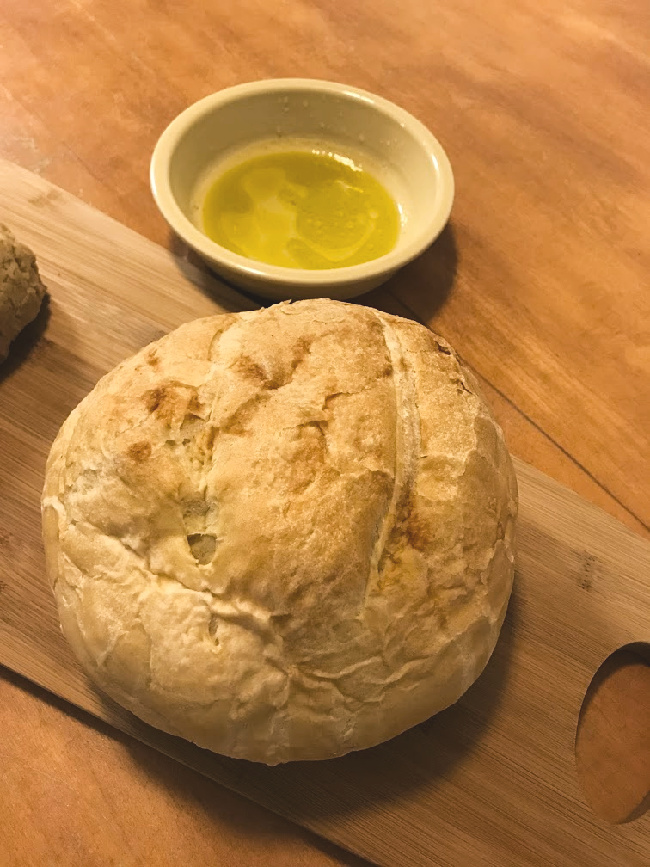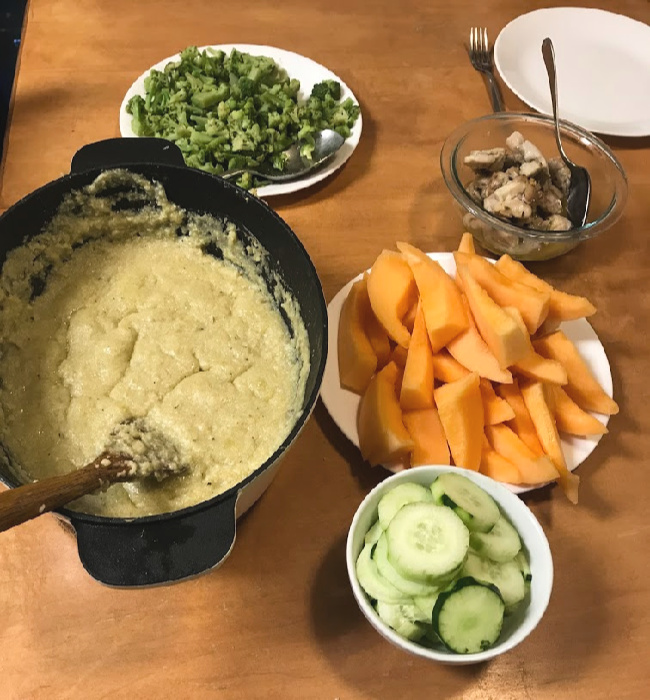
We recently sat down to a flavorful dinner, every dish well seasoned with fascinating spice combinations. Our meal was relatively simple, full of “whole food” ingredients, and fun. Why so fun? Our meals were inspired by our history studies on Ancient Rome.
While our scenery has changed from the lush greens of the northwest to the open range of the prairies, our school has continued. I love making history a central part of our homeschool, and we’ve picked up where we left off – Ancient Rome. I thought it would make history come alive to eat like a Roman for a day.
How Did the Ancient Romans Eat?
This time period has the potential to inspire lush and delicious meals. I should well know as my husband and I once went to a delectable four-course dinner at a pop-up restaurant in Portland with a guest chef who cooked us a meal inspired by traditional Roman food. Yum!
How well an Ancient Roman ate varied by their social status. The very rich could eat ridiculous and precious food items, and the poor could eat repetitive and nutritionally deficient meals. But generally, their diet was full of nourishing, varied ingredients, and well spiced. I joked that I wouldn’t be surprised if someone capitalized on how healthy their diet was by writing a book entitled something like, “Eat like an Ancient Roman for Health.” But let’s be honest, it’s true! Most people would eat a healthier diet if they ate like the Ancient Romans.
Their diet, very similar to a modern Mediterranean diet, was full of whole grains, lentils, peas, vegetables, fruits, cheeses, eggs, and meats. What sets the cooking style apart for me was their use of spice combination. One article mentioned that the flavors they used – balancing sweet, savory, umami, and sour – were closest to modern Asian cooking. Regardless, there is a lot of inspiration to be had from the Ancient Romans. They also flavored much of their food with a fermented fish sauce. Our closest equivalent now would be Asian Fish Sauces (like this one from Amazon: Fish Sauce).
Regardless of what people group you look at, I’m reminded how simple many foods were in Ancient times. You will notice the simplicity of the meal plan below.
Other resources for Ancient Roman Recipes: Around the Roman Table: Food and Feasting in Ancient Rome and Tasting Rome: Fresh Flavors and Forgotten Recipes from an Ancient City: A Cookbook
Our Ancient Roman Meal Plan
(Note, we weren’t trying to be completely historically accurate in how we prepared all of these foods, but just got as close as we could).

Breakfast (ientaculum): We enjoyed Milk and homemade Bread or Bread dipped into olive oil and vinegar. If this sounds “light” to you, consider that milk and bread (a standard breakfast for Roman children) was likely more hearty than the typical bowl of cereal with milk we eat now.
As I researched midday meals, I came across numerous articles discussing Roman street food. Did you know that Ancient Romans were probably the first to popularize street food? (You can read about this historical tidbit here.)
One fact that I have always found especially fascinating was that a form of pizza was likely a popular street food, alongside many other food offerings. How fun that this popular meal has such old origins!
“Poor citizens of Pompeii could order some of the ready-to-eat specialties of the era, which most likely included a sort of tomato-free pizza (tomatoes were not yet brought to Europe at the time) made of cheese and onions, soups, pickles, eggs, fish, ham, and of course wine.” Source

Lunch: prandium
We went with a simple lunch inspired by this description: “The Roman lunch (cibus meridianus or prandium), a quick meal eaten around noon, could include salted bread or be more elaborate with fruit, salad, eggs, meat or fish, vegetables, and cheese.” Source
Our lunch, eaten on the fly after a hike (which, since most Romans ate on the go at lunch time, was appropriate) included: Delicious wine crackers (you can get the recipe here – I also made a gluten-free version), goat cheese, olives, grapes, and apples. This was an easy and scrumptious meal!

Dinner: (cena)
While the rich could eat elaborate and lengthy dinners, we opted for a more moderate feast. I spent some time researching gluten-free grains that would be still authentic to Roman times. In the past, historians assumed that millet was only consumed by the poorest in Ancient Rome. Recent research suggests, however, that it was eaten by a much broader swath of the population.
Ancient Romans ate many grain porridges, so I thought it would be fun to make a savory millet porridge. (You can see an authentic sweet porridge recipe here.)
Unable to find a definite recipe for a millet porridge from Ancient Roman times, I improvised adding herbs I knew they used (basil and oregano) and flavoring it with broth, onions and garlic. It may not have been authentic, but it was very delicious. I may make it part of our regular menu.
We also made a chicken dish cooked in a white wine sauce, spiced with fennel, dried herbs, and pepper… (Delicious!).
Broccoli steamed in a spiced white wine sauce, and then served with a mint spiced sauce over it (inspired by this version).
And we also had cantaloupe and cucumber slices on the side.
After dinner, I asked the kids what they thought about eating food for a day inspired by history, and they were all fans. I was asked to continue the tradition as we continue to read about new people groups and other time periods.
Ancient Romans reminded me of these four essential concepts:
- Eating simply can be very nourishing as well as delicious. Most people from Ancient times, like us now, had little time to make elaborate meals. Simple doesn’t necessarily mean bland or unhealthy.
- Many ancient people groups included grain porridges on the menu (I’ve always enjoyed the Asian rice porridges, Congees, for example). These can be hearty, simple, frugal, and delicious.
- Produce – such as fruit and vegetables – should be more central on our table. It’s a healthy practice, but it’s also satisfying and delicious.
- Use spices and herbs liberally, and make simple sauces to further enrich the flavor of dishes. Roman food was bursting with flavor, and there is little reason we can’t follow suit!
Latest posts by KimiHarris (see all)
- 2 Ingredient Peppermint Bark - December 21, 2022
- Herbal Hibiscus Lemonade (Keto, THM) - March 16, 2022
- Creamy Curry Red Lentil Soup - December 8, 2021
You refer to fish sauce. Most westerners turn up their nose at the thought of this until they learn that Worcestershire sauce IS fish sauce with some vinegar and pepper.
Hi Rick,
That’s a great point! Yes, you are right. A lot of people do turn their noses up at it. (And I admit, it’s a little smelly.) Since we love Thai food, I’ve gotten very used to using it in cooking, and it adds so much depth of flavor! I’m now a fan. 🙂
Exactly, as are the anchovies that base Caesar dressing. I think it’s the idea of fermented fish that bothers people so much. Never in my life have I ever added anything to my food that adds so much on so many levels. I actually use fish sauce, either Asian or Spanish, in much of my cooking in place of salt, and use it in place of salt to make all of my stocks and soups. I couldn’t live without it anymore.
I love how you use it across the board! That’s a great idea. Do you have a favorite brand? I’ve used a couple different ones, and haven’t decided which one I like the best.
So glad to be reading your posts again. There is a guy, Seamus Blackley, who has gotten a sourdough starter from ancient Egyptian pottery fragments and he’s amazed at the slight sweetness it gives. He’s a scientist so he still needs proof it wasn’t contaminated etc. When he’s sure, he’ll make it available to share…..a fun idea.
That sounds AMAZING! Thank you for sharing. I hope he is able to make it available soon!
Very interesting. I believe the fish sauce you refer was called “garum. There are remains of a small Roman outpost on the south coast of Spain (between Cadiz and Gibraltar) called Bolonia where you can still see the vats where they prepared the sauce.
Very interesting and informative. I believe the sauce you refer to was called “garum.” There are ruins of a small Roman outpost called Bolonia,, on the south coast of Spain (between Cadiz and Gibraltar), where you can still see the vats they used to prepare the sauce. Well worth a visit if you are in that area.
Gethin,
Thanks for sharing! I would love to see those vats someday.